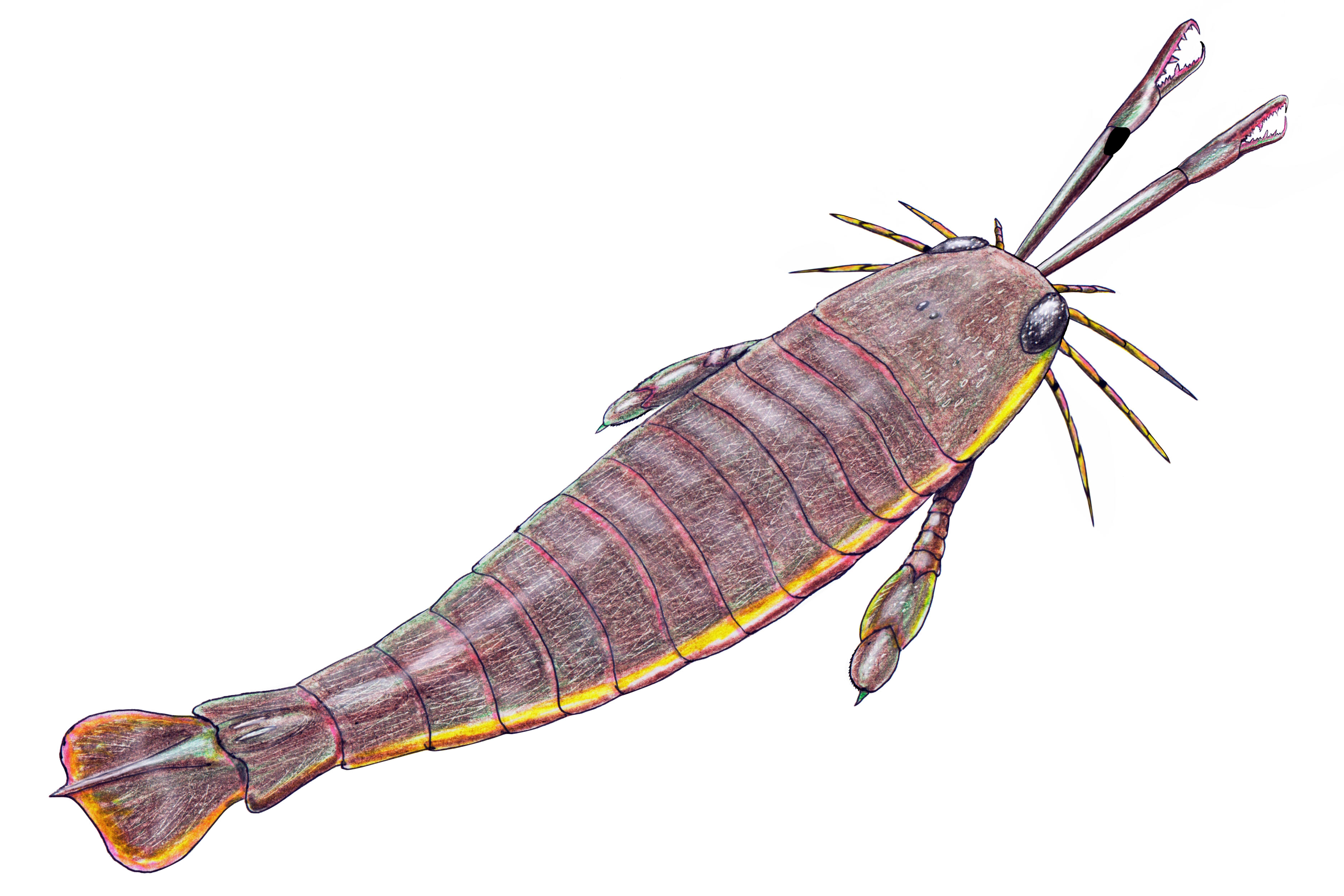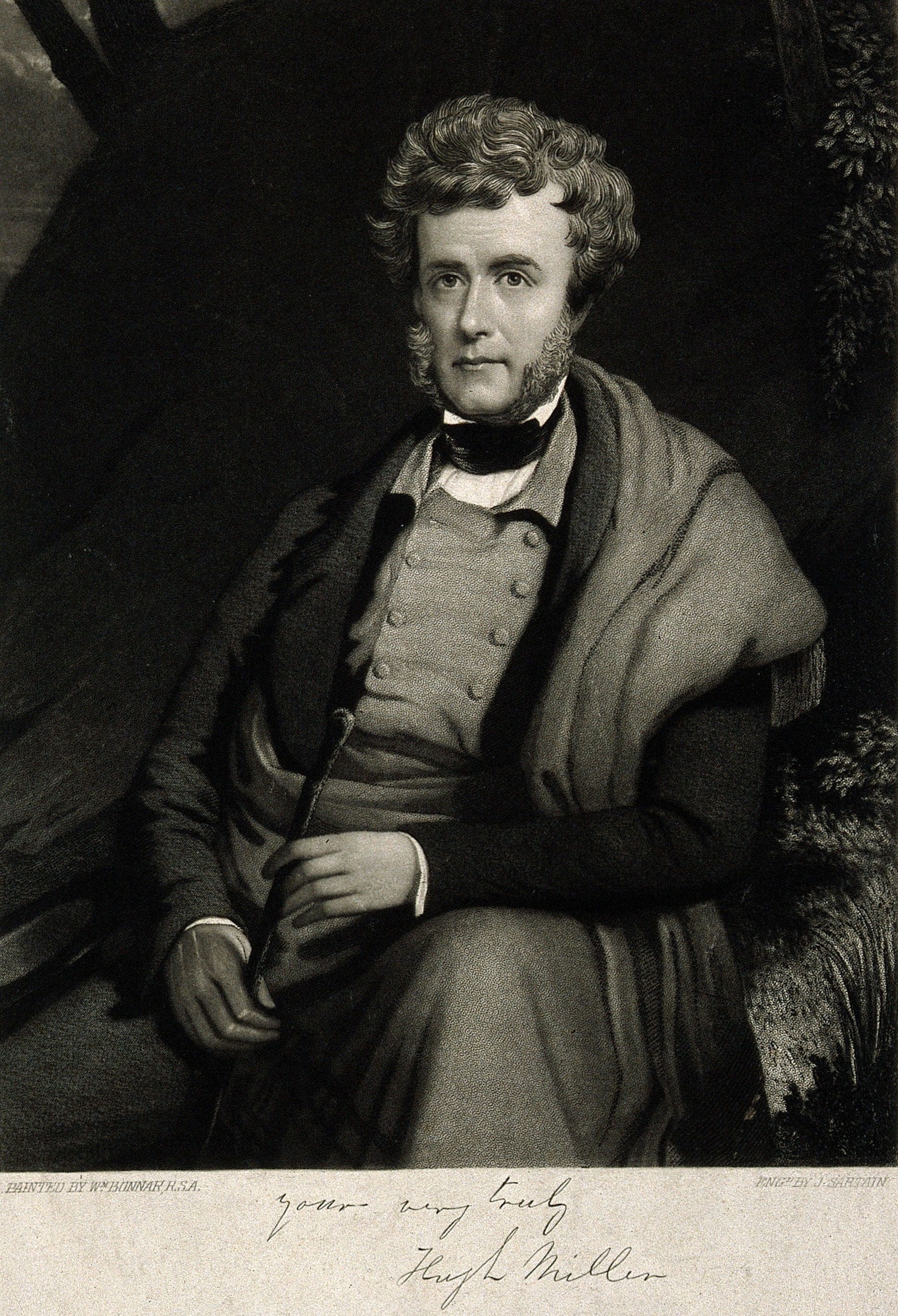|
Hughmilleria
''Hughmilleria'' is a genus of eurypterid, an extinct group of aquatic arthropods. Fossils of ''Hughmilleria'' have been discovered in deposits of the Silurian age in China and the United States. Classified as part of the basal family Hughmilleriidae, the genus contains three species, ''H. shawangunk'' from the eastern United States, ''H. socialis'' from Pittsford, New York, and ''H. wangi'' from Hunan, China. The genus is named in honor of the Scottish geologist Hugh Miller. ''H. socialis'' is the type species of Hughmilleriidae, a eurypterid family classified in the superfamily Pterygotioidea that is differentiated by their streamlined bodies, the enlargement of their medium-sized chelicerae and the presence of paired spines on the walking appendages. With the biggest specimen measuring 20 centimetres (8 inches) in length, ''Hughmilleria'' is considered a eurypterid of small size. Description ''Hughmilleria'' is the most basal (primitive) known member of the Pterygotioidea. ... [...More Info...] [...Related Items...] OR: [Wikipedia] [Google] [Baidu] |
Hughmilleria Shawangunk The Eurypterida Of New York
''Hughmilleria'' is a genus of eurypterid, an extinct group of aquatic arthropods. Fossils of ''Hughmilleria'' have been discovered in deposits of the Silurian age in China and the United States. Classified as part of the basal family Hughmilleriidae, the genus contains three species, ''H. shawangunk'' from the eastern United States, ''H. socialis'' from Pittsford, New York, and ''H. wangi'' from Hunan, China. The genus is named in honor of the Scottish geologist Hugh Miller. ''H. socialis'' is the type species of Hughmilleriidae, a eurypterid family classified in the superfamily Pterygotioidea that is differentiated by their streamlined bodies, the enlargement of their medium-sized chelicerae and the presence of paired spines on the walking appendages. With the biggest specimen measuring 20 centimetres (8 inches) in length, ''Hughmilleria'' is considered a eurypterid of small size. Description ''Hughmilleria'' is the most basal (primitive) known member of the Pterygotioidea. ... [...More Info...] [...Related Items...] OR: [Wikipedia] [Google] [Baidu] |
Hughmilleriidae
Hughmilleriidae (the name deriving from the type genus '' Hughmilleria'', which is named in honor of Scottish geologist Hugh Miller) is a family of eurypterids, an extinct group of aquatic arthropods. The hughmilleriids were the most basal members of the superfamily Pterygotioidea, in contrast with the more derived (more "advanced") families Pterygotidae and Slimonidae. Despite their classification as pterygotioids, the hughmilleriids possessed several characteristics shared with other eurypterid groups, such as the lanceolate telson (the most posterior segment of the body). Hughmilleriids are defined as pterygotioid eurypterids with swimming legs similar to those of the type genus, ''Hughmilleria'' (that is, 7th and 8th leg segments narrow and 9th segment very small), and whose second to fifth pair of appendages were spiniferous. Some further diagnostic characters unite the group, such as the slightly enlarged chelicerae (frontal appendages) and the streamlined shape of their b ... [...More Info...] [...Related Items...] OR: [Wikipedia] [Google] [Baidu] |
Pterygotioidea
Pterygotioidea (the name deriving from the type genus ''Pterygotus'', meaning "winged one") is a superfamily of eurypterids, an extinct group of aquatic arthropods. Pterygotioids were the most derived members of the infraorder Diploperculata and the sister group of the adelophthalmoid eurypterids. The group includes the basal and small hughmilleriids, the larger and specialized slimonids and the famous pterygotids which were equipped with robust and powerful cheliceral claws. Though the more primitive hughmilleriids were small, '' Hughmilleria wangi'' being the smallest of all pterygotioids at just in length, later members of the group, particularly in the Pterygotidae, would become the largest known arthropods to ever exist with several genera surpassing in length. Among all currently recognized eurypterid clades, the Pterygotioidea is the most diverse, containing over 50 species in 10 genera. With the number of recognized eurypterid species being around 250, pterygotio ... [...More Info...] [...Related Items...] OR: [Wikipedia] [Google] [Baidu] |
Pterygotid
Pterygotidae (the name deriving from the type genus ''Pterygotus'', meaning "winged one") is a family of eurypterids, an extinct group of aquatic arthropods. They were members of the superfamily Pterygotioidea. Pterygotids were the largest known arthropods to have ever lived with some members of the family, such as ''Jaekelopterus'' and '' Acutiramus'', exceeding 2 metres (6.6 ft) in length. Their fossilized remains have been recovered in deposits ranging in age from 428 to 372 million years old (Late Silurian to Late Devonian). One of the most successful groups of eurypterids, the pterygotids were the only eurypterid family to achieve a truly worldwide distribution. Several evolutionary innovations made the pterygotids unique among the eurypterids, with large and flattened telsons (the posteriormost division of the body) likely used as rudders to provide additional agility and enlarged chelicerae (frontal appendages) with claws. These claws were robust and possessed teeth ... [...More Info...] [...Related Items...] OR: [Wikipedia] [Google] [Baidu] |
Pterygotus
''Pterygotus'' is a genus of giant predatory eurypterid, a group of extinct aquatic arthropods. Fossils of ''Pterygotus'' have been discovered in deposits ranging in age from Middle Silurian to Late Devonian, and have been referred to several different species. Fossils have been recovered from four continents; Australia, Europe, North America and South America, which indicates that ''Pterygotus'' might have had a nearly cosmopolitan (worldwide) distribution. The type species, ''P. anglicus'', was described by Swiss naturalist Louis Agassiz in 1839, who gave it the name ''Pterygotus'', meaning "winged one". Agassiz mistakenly believed the remains were of a giant fish; he would only realize the mistake five years later in 1844. ''Pterygotus'' was among the largest eurypterids. Isolated fossil remains of a large chelicera (frontal appendage) suggests that the largest known species, ''P. grandidentatus'', reached a body length of . Several other species, notably ''P. impacatus'' at ... [...More Info...] [...Related Items...] OR: [Wikipedia] [Google] [Baidu] |
Slimonia
''Slimonia'' is a genus of eurypterid, an extinct group of aquatic arthropods. Fossils of ''Slimonia'' have been discovered in deposits of Silurian age in South America and Europe. Classified as part of the family Slimonidae alongside the related ''Salteropterus'', the genus contains three valid species, ''S. acuminata'' from Lesmahagow, Scotland, ''S. boliviana'' from Cochabamba, Bolivia and ''S. dubia'' from the Pentland Hills of Scotland and one dubious species, ''S. stylops'', from Herefordshire, England. The generic name is derived from and honors Robert Slimon, a fossil collector and surgeon from Lesmahagow. Out of the four described species of ''Slimonia'', three measured below or up to in length. Only ''S. acuminata'' was larger, with the largest specimens measuring in length. Though this is large for a predatory arthropod, ''Slimonia'' would be exceeded in length by later and more derived (more "advanced") members of the closely related pterygotid family of eurypterid ... [...More Info...] [...Related Items...] OR: [Wikipedia] [Google] [Baidu] |
Hugh Miller
Hugh Miller (10 October 1802 – 23/24 December 1856) was a self-taught Scottish geologist and writer, folklorist and an evangelical Christian. Life and work Miller was born in Cromarty, the first of three children of Harriet Wright (''bap''. 1780, ''d''. 1863) and Hugh Miller (''bap''. 1754, ''d''. 1807), a shipmaster in the coasting trade. Both parents were from trading and artisan families in Cromarty. His father died in a shipwreck in 1807, and he was brought up by his mother and uncles. He was educated in a parish school where he reportedly showed a love of reading. It was at this school that Miller was involved in an altercation with a classmate in which he stabbed his peer's thigh. Miller was subsequently expelled from the school following an unrelated incident. At 17 he was apprenticed to a stonemason, and his work in quarries, together with walks along the local shoreline, led him to the study of geology. In 1829 he published a volume of poems, and soon afterwards ... [...More Info...] [...Related Items...] OR: [Wikipedia] [Google] [Baidu] |
Eurypterid
Eurypterids, often informally called sea scorpions, are a group of extinct arthropods that form the Order (biology), order Eurypterida. The earliest known eurypterids date to the Darriwilian stage of the Ordovician period 467.3 Myr, million years ago. The group is likely to have appeared first either during the Early Ordovician or Late Cambrian period. With approximately 250 species, the Eurypterida is the most diverse Paleozoic Chelicerata, chelicerate order. Following their appearance during the Ordovician, eurypterids became major components of marine faunas during the Silurian, from which the majority of eurypterid species have been described. The Silurian genus ''Eurypterus'' accounts for more than 90% of all known eurypterid specimens. Though the group continued to diversify during the subsequent Devonian period, the eurypterids were heavily affected by the Late Devonian extinction event. They declined in numbers and diversity until becoming extinct during the Permian–Tri ... [...More Info...] [...Related Items...] OR: [Wikipedia] [Google] [Baidu] |
Eurypterus
''Eurypterus'' ( ) is an extinct genus of eurypterid, a group of organisms commonly called "sea scorpions". The genus lived during the Silurian period, from around 432 to 418 million years ago. ''Eurypterus'' is by far the most well-studied and well-known eurypterid. ''Eurypterus'' fossil specimens probably represent more than 95% of all known eurypterid specimens. There are fifteen species belonging to the genus ''Eurypterus'', the most common of which is ''E. remipes'', the first eurypterid fossil discovered and the state fossil of New York. Members of ''Eurypterus'' averaged at about in length, but the largest individual discovered was estimated to be long. They all possessed spine-bearing appendages and a large paddle they used for swimming. They were generalist species, equally likely to engage in predation or scavenging. Discovery The first fossil of ''Eurypterus'' was found in 1818 by S. L. Mitchill, a fossil collector. It was recovered from the Bertie Formation of ... [...More Info...] [...Related Items...] OR: [Wikipedia] [Google] [Baidu] |
Biology Letters
''Biology Letters'' is a peer-reviewed, biological, scientific journal published by the Royal Society. It focuses on the rapid publication of short high quality research articles, reviews and opinion pieces across the biological sciences. ''Biology Letters'' has an average turnaround time of twenty four days from submission to a first decision. The editor-in-chief is Professor David Beerling FRS (University of Sheffield) who is supported by an international Editorial Board of practising scientists. Contents and themes As well as the conventional, short research articles, ''Biology Letters'' has recently published Special Features and Mini Series. While Special Features are a collection of up to 20 articles on a specific theme and published across multiple issues, Mini Series include up to six articles that are published in one issue. Examples of topics in these formats include ocean acidification, fossils, extinction, enhanced rock weathering and the evolutionary ecology of sp ... [...More Info...] [...Related Items...] OR: [Wikipedia] [Google] [Baidu] |
Telson
The telson () is the posterior-most division of the body of an arthropod. Depending on the definition, the telson is either considered to be the final segment of the arthropod body, or an additional division that is not a true segment on account of not arising in the embryo from teloblast areas as other segments. It never carries any appendages, but a forked "tail" called the caudal furca may be present. The shape and composition of the telson differs between arthropod groups. Crustaceans In lobsters, shrimp and other decapods, the telson, along with the uropods, forms the tail fan. This is used as a paddle in the caridoid escape reaction ("lobstering"), whereby an alarmed animal rapidly flexes its tail, causing it to dart backwards. Krill can reach speeds of over 60 cm per second by this means. The trigger time to optical stimulus is, in spite of the low temperatures, only 55 milliseconds. In the Isopoda and Tanaidacea (superorder Peracarida), the last abdominal b ... [...More Info...] [...Related Items...] OR: [Wikipedia] [Google] [Baidu] |









